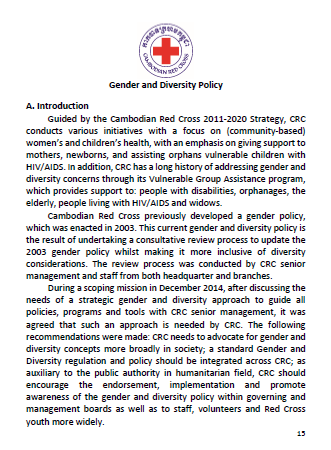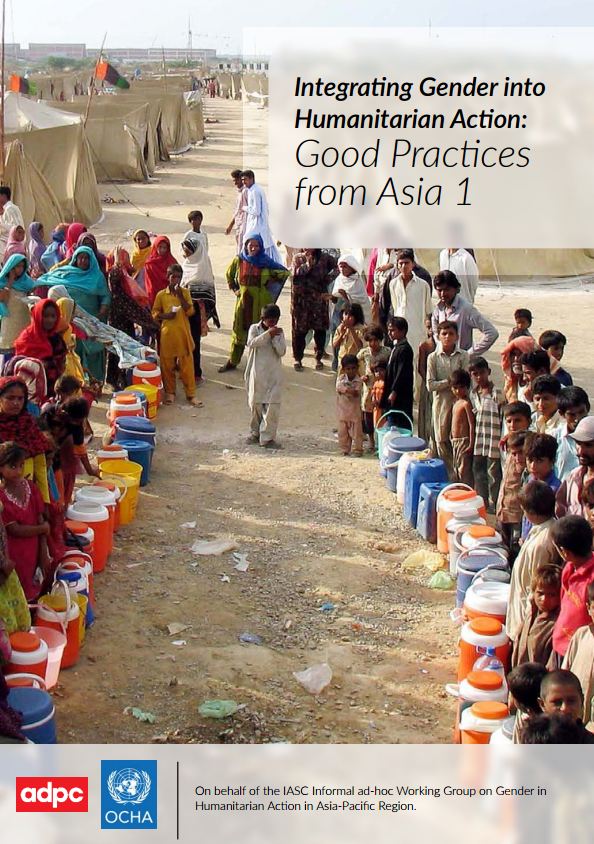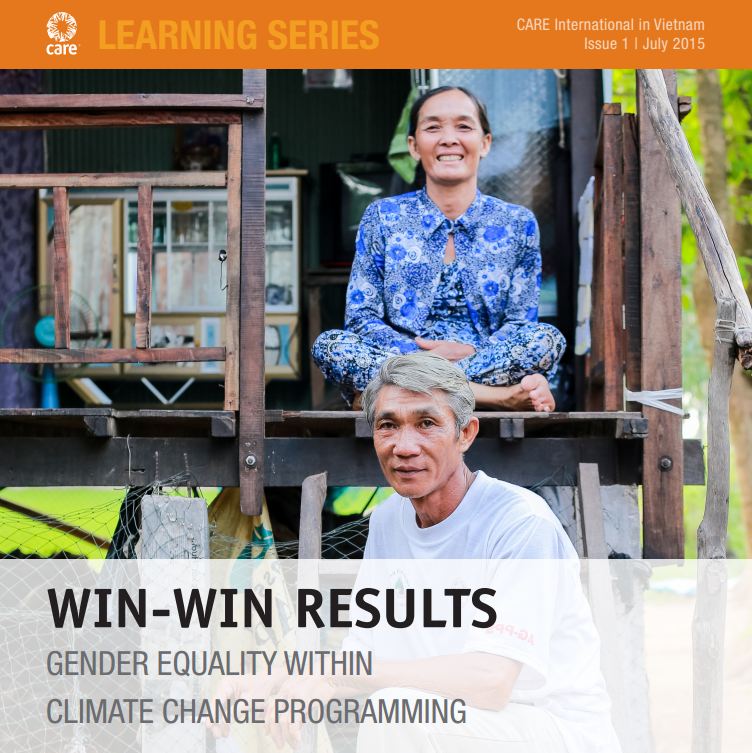Purpose
Cambodian Red Cross Society previously developed a gender policy, which was enacted in 2003. This current gender and diversity policy is the result of undertaking a consultative review process to update the 2003 gender policy whilst making it more inclusive of diversity considerations. The review process was conducted by CRC senior management and staff from both headquarter and branches.
This policy (in Khmer and English) establishes the basis for the Cambodian Red Cross to ensure that the gender and diversity differences are taken into account and systematically addressed in relation to core areas as defined in CRC Strategy 2011 – 2020, such as disaster management, health and health care in the community, promotion of the movement’s fundamental principles and humanitarian values, and organizational development and resource development.
Audience
Board members, senier management staff, staff, volunteers, youth volunteers, partners
![]()




